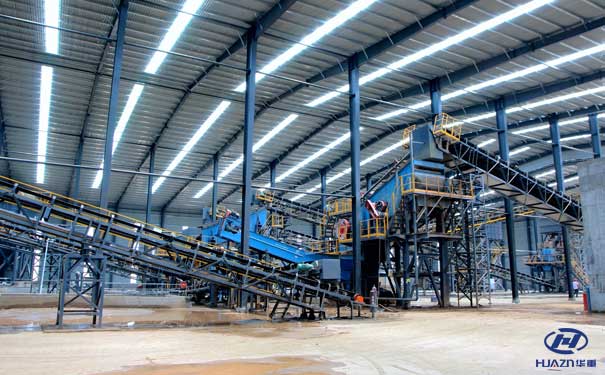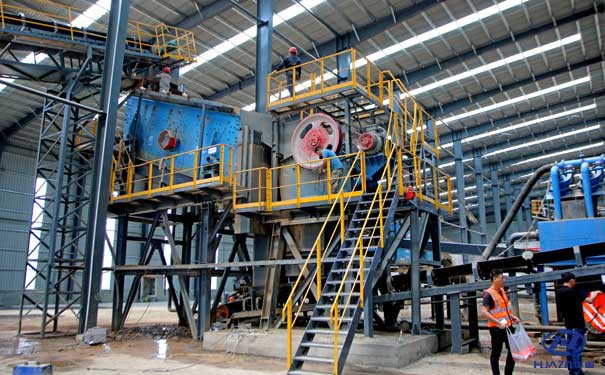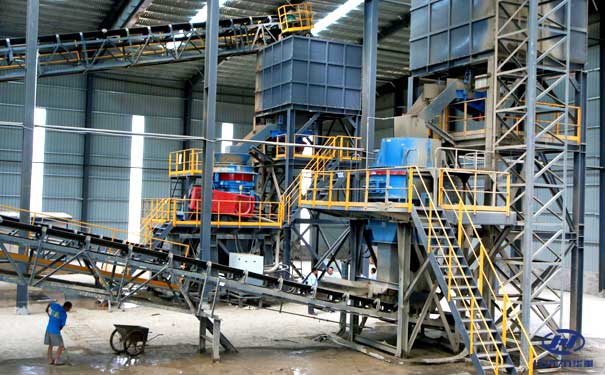The location of the sand and gravel plant has a very important impact on the future operation of the entire sand and gravel plant. Therefore, it is necessary to investigate the surrounding environment before opening the gravel plant to ensure that the location can meet a greater degree of satisfaction.
1. Convenient road traffic conditions, convenient electricity and water; now many sand and gravel plants still use fixed production lines, so aggregate transportation is particularly important. Most of the sand production lines use wet sand production, which is involved in the production process. Sand washing, sedimentation, fine sand recovery, etc., so water resources must be abundant, and there must be sufficient conditions to build sedimentation tanks and treat sewage.
2. Stay away from residential areas, and at the same time, in order to reduce pollution, it is advisable to choose downwind outlets that dominate the wind; the production of machine-made sand includes blasting, crushing, sand making and other links, during which certain noise, dust and other unsafe factors will inevitably be generated. Therefore, in general, sand and gravel plants are usually built far away from residential areas, and the downwind outlet with the dominant wind is selected to avoid certain pollution.
3. The distance between the plant area and the blasting point should be at least 200 meters in accordance with industry standards.
4. The area of the factory area, as well as the storage yard and capacity of raw materials and finished materials; due to environmental restrictions, many sand and gravel factories cannot operate in the open air and need to trim workshops. Therefore, the area of the factory area must be as large as possible, because it not only requires turnover each link in sand making, the stacking of raw materials, the stacking of intermediate materials and finished materials all require a certain amount of space.
5. Storage and transportation of finished materials.
After understanding the site selection of the sand and gravel plant, the editor will introduce to you the actual production situation of the 200t/h river pebble production line undertaken by Luoyang Dahua Heavy Industry for your reference:
The production line is located in Luoning, Henan Province, with an output of 200 tons of sand and gravel per hour. The plant uses a fully enclosed production plant. The aggregate production uses a three-stage crushing process. All materials are washed with water, which fundamentally solves the product particle size and gradation. Consistency in shape and particle composition, cleanliness and other high-quality construction sand and gravel aggregate quality requirements, realize the one-button start and stop of the production line, the recycling of production sewage, and meet the environmental protection requirements to the greatest extent.
The aggregate equipment of this sand and gravel production line adopts three-stage crushing. Before entering the raw material warehouse, the river pebbles are first screened by a partition screen. The screened raw materials enter the pre-screen, and the materials larger than 120mm enter the jaw crusher for preliminary after crushing, the crushed materials enter the intermediate crushing adjustment silo. The secondary crushing is completed by the cone crusher. The materials out of the cone enter the first screening workshop for screening. The materials larger than 31.5mm are returned to the cone crusher to be crushed again, forming a closed circuit circulation, the materials less than 20mm enter the vertical impact crusher for shaping and sand making, the materials are screened through the second screening workshop, and the screened materials are transported to each finished product pile by the belt conveyor.




